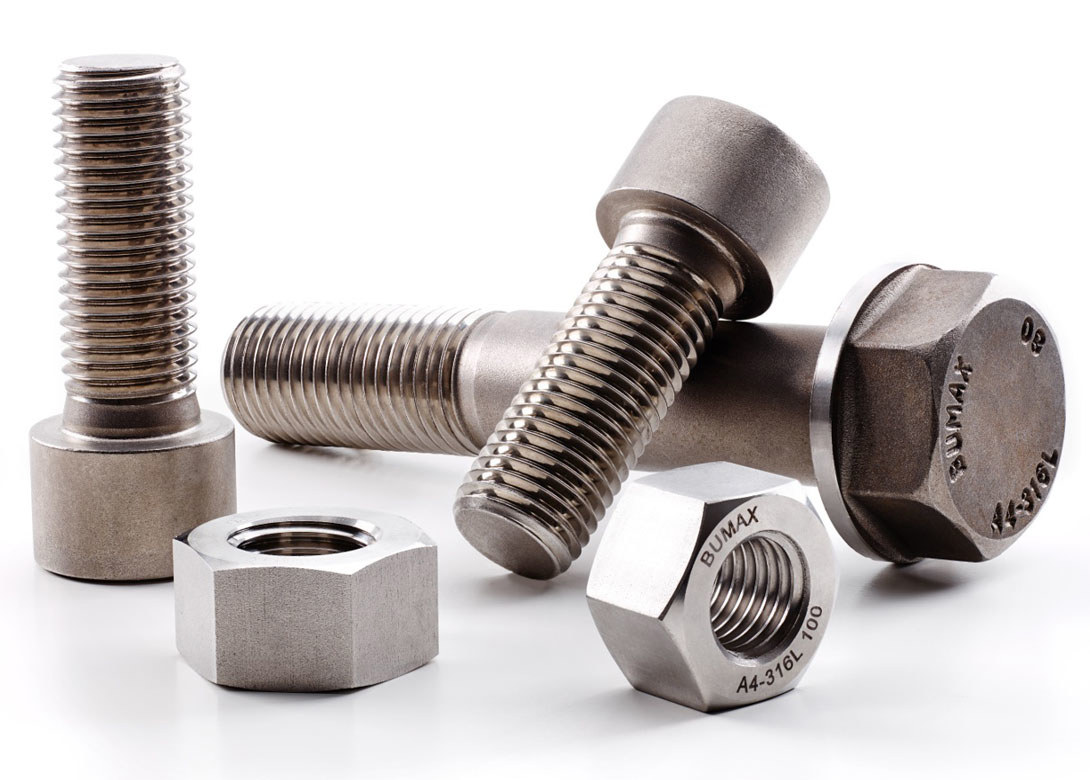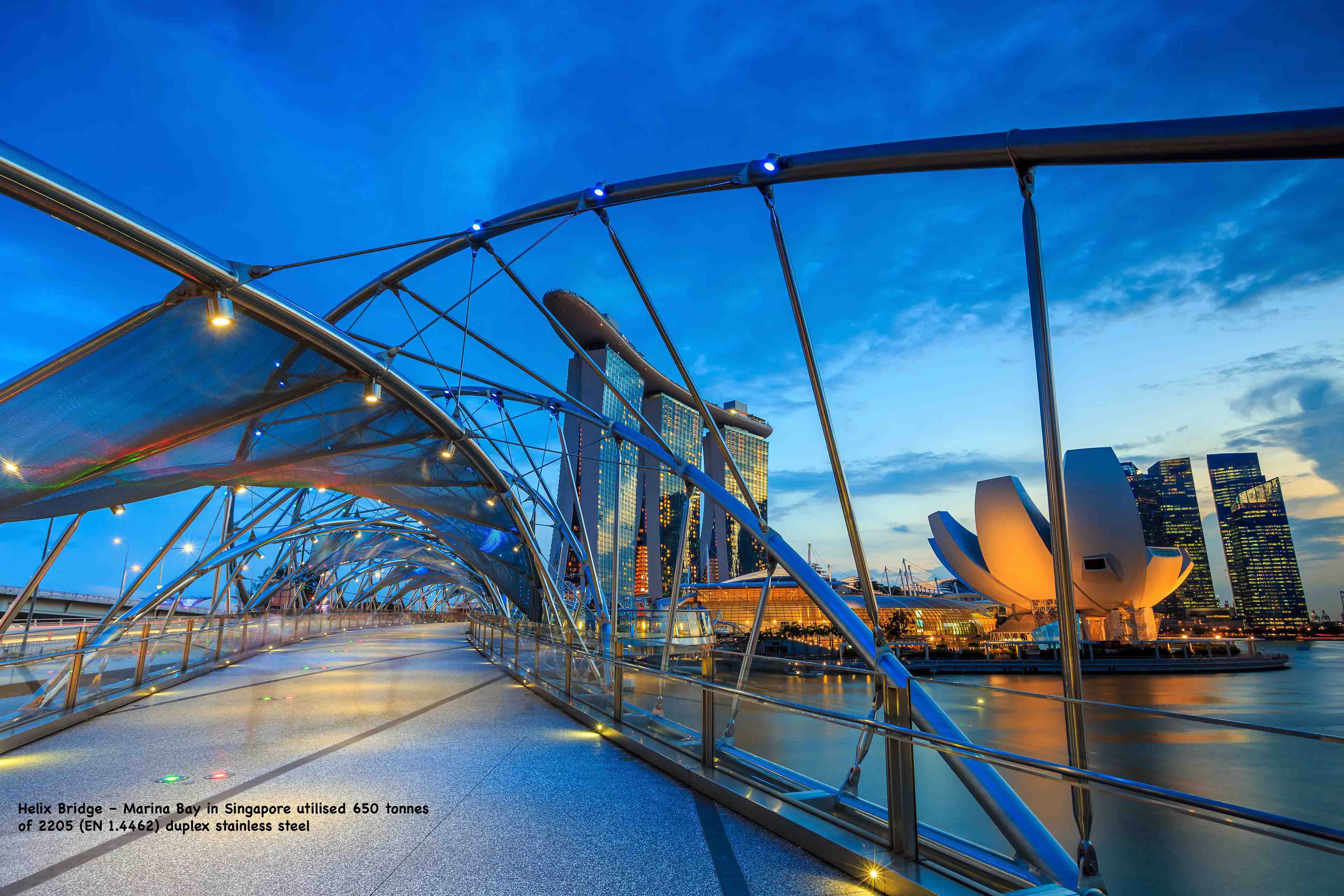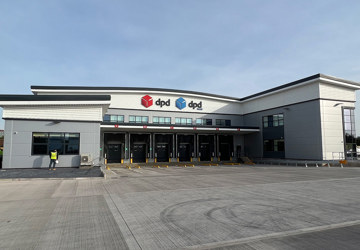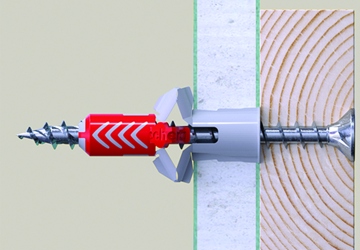

Here, Nimeka de Silva, head of marketing at BUMAX® AB, reflects on the role that stainless steel plays in the construction industry, the impact stainless steel will have on the construction industry in the future and what solutions BUMAX® can provide in this ever-changing industry sector.
Almost every industry sector is now under pressure to continually evaluate their impact on the environment and consider opportunities to develop more sustainable industry practices. The construction industry is no exception to this, especially given the ever-increasing need for both public and private infrastructure. In light of these pressures, there is a growing appreciation for the long-term gains from designing infrastructure with longer lifespans, reduced ongoing maintenance and a high proportion of recyclability at the end of life. This is not only from the perspective of sustainability but there is now also a convincing commercial argument. As governmental and societal focus increases, new policies and industry measures continue to be introduced, bringing additional challenges for developers, architects and engineers. This is where stainless steel materials can offer considerable advantages.
Stainless steels are some of the world’s most sustainable engineering materials, given their resilience to environmental conditions, durability, low maintenance and high levels of recyclability. There are over two hundred recognised grades of stainless steel, all with different properties and varying capabilities. For construction applications, austenitic and duplex stainless grades offer the biggest potential, given their combination of strength, ductility, corrosion resistance and manufacturability. Properly considered, they can not only help designers maximise the reliability and lifespan of assets but also reduce the ongoing (and often costly) maintenance required.
Stainless steel materials have been widely used in industrial structures for some time, however barriers to more widespread adoption of stainless steel in general construction have typically been due to a lack of knowledge, design guidance and standards, component manufacturing and fabrication experience, when compared with carbon steel. There is also a higher upfront investment needed with stainless steel. The total lifecycle cost profile is certainly different to that of carbon steel, where the higher cost efficiencies of stainless steel are realised during the life of the asset, rather than in the initial construction. However, perceptions, experience and economics are starting to change, making a far stronger case for the increased use of stainless steel within the built environment.
BUMAX® have built up considerable experience in stainless steel structural bolting over a number of years. As a Swedish manufacturer, specialising in high-strength stainless steel bolts, our expertise in this area has led to involvement on many technically challenging construction projects, ranging from bridge construction, tunnelling, building façades, to structural applications in the nuclear industry. BUMAX® offers a standard stock range of high strength fasteners in different stainless materials. In addition to this, a sizeable proportion of BUMAX®’s business is project related. The company’s technical and global sales engineering teams are able to offer application support for designers and specifiers, to develop bespoke manufactured solutions.
BUMAX®’s stainless steel structural bolting falls into two categories. Firstly, non-preloaded bolting intended for bearing connections acting in tension and/or shear. The second is for more specialist pre-loaded bolt assemblies, intended for slip-critical connections.
BUMAX® non-preloaded structural bolts are based on the BUMAX® 88 product grade, tested, certified and supplied CE marked in accordance with EN 15048. BUMAX® 88 is a premium A4/316L stainless material benefiting from higher Molybdenum content. It not only offers the advantage of being mechanically equivalent in strength to 8.8 carbon steel bolts (stronger than A4-80 bolts) but with the additional benefit of higher corrosion resistance than common grades of A4/316 material. BUMAX 88 can be suitable for use in a wide range of environments, with a non-preloaded structural bolt range that includes hex head bolts, set screws and socket head cap screw assemblies in diameters from M12 – M36 for steel construction applications and from M5 upwards for aluminium construction.
Pre-loaded structural bolting in stainless-steel is more involved, as there are currently no standards that govern the use of stainless steel bolts in such applications. However, there is progress being made in this area to develop guidance (and eventually standards) on the use of stainless steel in pre-loaded bolting applications. Within Europe, allowance is currently given in Eurocode 3: Design of Steel Structures – Supplementary Rules for Stainless Steel, which states that acceptability of high strength stainless steel bolts for slip-resistant connections should be demonstrated through project specific testing.
In the US, guidance is now provided on the use of austenitic and duplex stainless bolts by the American Institute of Steel Construction (ANSI/AISC) – 370 Specification for Structural Stainless Steel Buildings. Precipitation hardened martensitic grades of stainless steel have also referenced and have historically been used in the US due to their high strength, however they do not benefit from the same levels of corrosion resistance, ductility or impact strength as austenitic or duplex stainless grades and not covered for use in slip-critical connections.
BUMAX® are able to offer pre-loaded structural bolting solutions for slip-critical connections in both austenitic stainless grades (BUMAX® 88 & 109) and higher performance duplex and super-duplex stainless grades (BUMAX® DX or SDX). This provides engineers with three levels of corrosion resistance depending on the environmental conditions, catering for structures located in-land that are exposed to the elements, right through to the harshest off-shore conditions. There is also a choice of two strength classes – 88 and 109, equivalent in strength to 8.8 and 10.9. This gives engineers added design flexibility, depending on the structural requirements of the application. BUMAX®’s product range includes hex head bolts and fully threaded set screws, in diameters ranging from M10 – M24. Technical support by BUMAX® is provided to specifiers at the early stages of project design to determine appropriate selection, before conducting project specific testing to confirm suitability, as well as the correct design and installation parameters.
To support architects and structural engineers achieve more sustainable designs, BUMAX® has gone through the process of obtaining an Environmental Product Declaration (EPD) on BUMAX® 88 and 109. An EPD is based on a Life Cycle Assessment (LCA) of the product, providing specifiers with valuable data on the environmental impact of a product being used within the construction design. On top of the general sustainability benefits of stainless steel materials, BUMAX® has the added advantage of utilising the majority of its raw material from close proximity to its factory in central Sweden and employing manufacturing practices that are continually assessed to keep environmental impact as low as possible.
It is likely that we will see stainless steel play a more pivotal role within construction engineering in the coming years. Stainless steel materials provide an array of benefits from high corrosion resistance, increased durability, minimal maintenance and very high levels of recyclability at its end of life, which makes a strong case for being able to support the challenge of improving sustainability in the built environment. With strong experience to date and an exceptional range of high-performance products and manufacturing capability, BUMAX® is committed to doing its part in the continued development of engineering capabilities and sustainability within the construction industry.
Learn more about Bumax®'s approach to sustainability here:
www.bumax-fasteners.com

Becca is the latest member to join our team and is eager to get stuck into the world of fasteners. She brings an enthusiastic and fresh outlook on what we do editorially and will be leading our social media activity – including sourcing material, editing articles and posting online.





